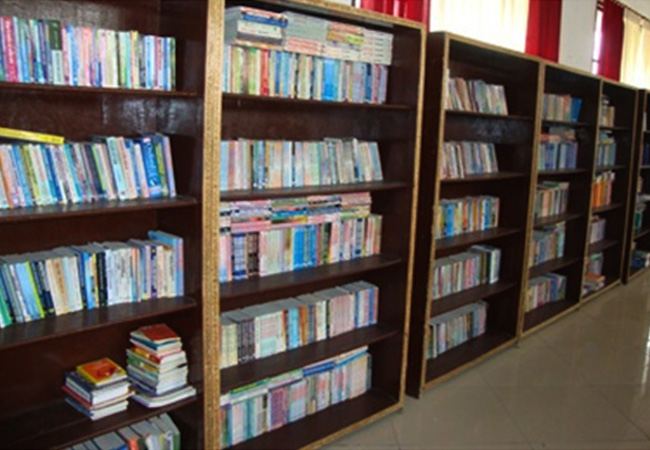
 Dr. (Mrs.) Jeewan Jyoti Sidana is a former Dean of the Faculty of Education, Guru Nanak Dev University, currently is the founder of the Sidana Group of Institutions, Amritsar, Punjab. She has a long Teaching and Administration experience and has received the ‘Lifetime Achievement Award’ for outstanding achievements by National and International Compendium of New Delhi in 2005. She has received a Doctorate Degree in Education Sciences. Dr. Sidana has also been writing research papers in educational journals and has innumerable articles to her credit. She has been active in various Educational activities and has presented academic papers in international conferences and forums.
Dr. (Mrs.) Jeewan Jyoti Sidana is a former Dean of the Faculty of Education, Guru Nanak Dev University, currently is the founder of the Sidana Group of Institutions, Amritsar, Punjab. She has a long Teaching and Administration experience and has received the ‘Lifetime Achievement Award’ for outstanding achievements by National and International Compendium of New Delhi in 2005. She has received a Doctorate Degree in Education Sciences. Dr. Sidana has also been writing research papers in educational journals and has innumerable articles to her credit. She has been active in various Educational activities and has presented academic papers in international conferences and forums.
Peter Tase (PT): Can you tell us briefly about Sidana Institution. How has it emerged as a people friendly project?
JJS: Sidana Group of Institutions is located in a rural area which was drug ridden and lacked educational awareness. This location was deliberately chosen since Sidana Institutes was planned as a people friendly project. We provide quality education coupled with modern infrastructure at a reasonable cost. The courses at Sidana Institutes are placement oriented and vocational in their true sense. The institute also provides placement to its own alumni as teachers, instructors and lecturers. Sidana Institutes organizes international and national events at a regular basis and extends invitation to the local community in order to generate awareness. Some of the areas of emphasis in these events have been NSS, NCTE, female education and leadership projects.
Peter Tase (PT): Being an educational entrepreneur and managing several educational institutions, what are your views on the present Higher Education System in India?
Dr J.J Sidana (JJS):
Higher education in India suffers from several systemic deficiencies. As a result, it continues to provide unemployable graduates despite emerging shortages of skilled manpower. The standards of academic research are low and declining. Other issues of Higher Education in India are the un-manageable affiliating system, inflexible academic structure, uneven capacity across various subjects, eroding autonomy of academic institutions, and the low level of public funding. To add to this other concerns relating to the dysfunctional regulatory environment, the accreditation system, absence of incentives for performing well, and the unjust public funding policies are not recognized as important. The significant gap between the education and industry therefore needs to be aligned with Industry needs and should be made into a needs based, requirement based and placement based with an emphasis on skill development.
PT: Educational Management is developing at a phenomenal pace globally. The political, economic, and social environments are all changing at an equally rapid speed. How do you consider being an educational administrator to cope with such changes?
JJS:In my opinion change is energizing and essential for healthy individuals and organizations. When educational innovation and creativity are the norm, academicians are most likely to keep up with the rapid changes around and routinely seek out innovative ideas. I approach work with a creative rather than a reactive perspective. I continually keep clarifying purpose and vision to the staff and adapt other ideas proactively; this helps me in getting expected results. Thus by keeping my-self and staff updated with the latest developments by regularly attending seminars and workshops quality educational environment is sustained.
PT: The management of organizations, including people management, is turning out to be a challenging task in the present international scenario. What are the challenges you have faced in managing several institutions and what is your future strategy?
JJS: Since the human nature plays a very major part in the overall success of an organization, it is therefore important to have an effective working relationship between the employee and the administrator as this is essential for the success of the organization. While ensuring effective and efficient administration in my institutions I personally advocate the use of good human relations and motivating staff not only through monetary means but also by recognizing every individual’s assets and enhancing their feeling of responsibility and achievements. I feel creation of a talent culture in Institutions/Universities is the need of ours. There is a challenge of acquiring quality staff. In order to overcome this I keep my staff updated with latest innovations by organizing regular workshops, and staff development programs. I keep personal connect with my team and make them aware of the role they are playing in the institution and the society at large.
PT: Education has been lately turned into more of a business than an effort to educate the people of the country. Do you agree? If yes why, if not why?
JJS: The problem is that the not-for-profit model in higher education in India is often considered a hurdle to attract serious players. A for-profit-model is argued to make investments more legible in an accounting sense and thereby expanding the tax base in the state. It is also argued that this model would further the linkage between the academia and industry. When the sector is opened up, the objective should be to improve the quality of education, up-grading of the courses on a timely basis and increase availability and accessibility to higher education avenues. These guidelines need to be incorporated in the legislation. Otherwise the entrance of non-professionals into the field of education will lead to an unplanned growth in the sector.
PT: Diminishing quality in teaching is a prime factor attributed to the decline of education standard in India. Do you agree with this? If yes what are your suggestions for improving these standards?
JJS: The system of education is succumbed into the issues of quality in many of its institutions; there is a chronic shortage of faculty, poor quality teaching, outdated and rigid curricula and pedagogy, lack of accountability and quality assurance and separation of research and teaching. Another fact is that due to massive privatization of education, non professionals enter these organizations with sole aim of making profits and not provide education. Thus they are almost incapable to embrace innovations. In fact the teachers, principals or the administrators in such organizations do not have power to bring change, and so they see themselves as disempowered to make any difference in quality of education. There is an urgent need for systemic change in affiliated colleges to improve the quality of teaching and learning with a good pay package for teachers so that the brain drain is controlled.
PT: The percentage of students taking higher education is hardly about 13 % in India whereas the same is varying between 28 to 90 %, across the world. According to your experience what is the reason for such a low enrollment rates in the Indian higher education?
JJS: Socially, India remains highly divided; access to higher education is uneven with multidimensional inequalities in enrollment across population groups and geographies. Other issue is the existing patriarchal system. But on the positive side of it the Government plans are in place to transform the sector over the next five years. Every aspect of higher education is being reorganized and remodeled: funding, leadership and management, quality assurance, accountability, relations with industry, international collaboration, and the way research and teaching are conducted. If these reforms succeed, the breadth and depth of the change will be transformational.
PT: What sort of staff development programs do you have to help educators improve their skills, to become more knowledgeable?
JJS: In my opinion the role of the teacher is required to change from being information providers to becoming learning facilitators. For making it possible we in our institutions have turned our focus from content teaching to learning outcomes, for this we invite experts on a regular basis to train teachers professionally and equip them for an effective transition.




